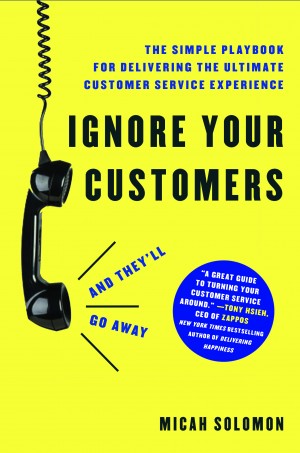The Promise of Trait-Based Hiring: Start Hiring Better Customer-Facing Employees Today

When you’re selecting new employees for roles in which they’ll be interacting with customers (and, likewise, when you’re moving existing employees into such roles), the approach that tends to work best is to give more weight to personality traits than to previously acquired skills and experience.
The technical, vocational aspects of most positions can be taught to nearly any employee, but personality traits tend to have calcified by the time an applicant reaches adulthood. If you bring on new employees who lack the right personality traits for service, you’re going to find them struggling in their roles every step of the way, even if they are otherwise qualified.
You can try to make people enjoy others, to make them empathetic, or to make them enjoy working on behalf of customers — but it won’t be easy. At best, in fact, it’s an uphill battle. At worst, it’s an utter impossibility.
How to Stop Finding the Wrong People and Start Finding the Right Ones
Before I spell out how to determine which prospective employees have the right traits for customer-facing roles, I need to cure you of the wrong way of going about it: going with your gut.
Your gut instinct for picking the future superstars of customer service is probably not as spot-on as you think it is. Just as most every driver on the road believes their own driving skills to be above average, a lot of managers and leaders believe themselves to have above-average abilities when it comes to identifying future high-performers. As the carnage on our roads and the multitudes of inappropriately selected employees can attest, both groups could use some improvement.
The common yet unwarranted cockiness of leaders and managers is caused by a psychological phenomenon called the “self-serving bias.” This bias causes us to attribute whatever successes we have to our talents and to ascribe any failures we experience to external events and bad luck. As it applies to hiring decisions, the self-serving bias deludes us into thinking we have a special gift for employee selection by making us credit ourselves for good hires while rationalizing our bad hires as flukes.
Instead of going with your gut, try bringing science into the employee-selection process, with the goal of eliminating as much happenstance as possible.

To take this approach, you would license a diagnostic profiling tool that purports to screen for the characteristics necessary for your open role. Then, you’d broadly verify the applicability of your new profiling tool as follows: ask a few of your best employees to go through the profiling, and also have a few of your solid-but-less-dramatically-distinguished employees do the same.
What you’re trying to find out is this: Can the profiling tool distinguish between these two categories of employees? Do your existing outstanding employees also look outstanding on paper? Are your middle-of-the-road employees’ scores appropriately middle of the road? If so, you can be confident you’ve roughly verified the profiling tool’s validity.
You may also want to augment your profiling instrument with some commonsense approaches:
1. Use Behavioral-Based Interviewing
I have a lot of skepticism about traditional job interviews. The data unfortunately suggests most interviews simply show us who is good at being interviewed, rather than who will be good at doing the job once hired.
Still, if you are going to base your hiring decisions in whole or in part on interviews, be sure to include a lot of “Tell me about a time you did X” type of questions, and go easy on the “What are your strengths and weaknesses?” type of questions. You’ll get a fuller picture of your applicant if you lean on behavioral interview techniques.
2. Pay Attention to How the Applicant Treats Your Existing Employees
Ann Alba, the resident manager of the triple Five-Star, double Five-Diamond Broadmoor Hotel in Colorado Springs, Colorado — that’s fifteen stars from Forbes and ten diamonds from AAA — says she has learned more about applicants from how they treat her employees than she has by conducting formal interviews.
“I believe almost anyone can build themselves up for a good interview,” she says. “I’m more interested in what I hear back from my team about how [the prospect] treated the garage attendant as they arrived on the property, how they treated the receptionist, and how they interacted with the staff they passed in the hall. That shows the true customer service heart and how real it is.”
Don’t Send in the Clones
I don’t want to mislead you into thinking that, by getting scientific about hiring, your goal should be to end up with a homogenous, clone-like group of employees. In reality, your goal should be pretty much the opposite.
Done properly, selecting employees based on personality traits should open you up to a wider group of potential employees than you might otherwise consider. Trait-based hiring is designed to discover what lies underneath — to uncover the potential customer service superstars who don’t interview well or who are different age-wise, gender-wise, in appearance, in physical abilities, or in personal background from what you may have unconsciously typecast for their roles.
Adapted fromIgnore Your Customers (And They’ll Go Away)by Micah Solomon. Copyright © 2020 by Micah Solomon. Used by permission of HarperCollins Leadership. www.harpercollinsleadership.com.
Micah Solomon is a leading customer experience and customer service expert and author ofIgnore Your Customers (And They’ll Go Away): The Simple Playbook for Delivering the Ultimate Customer Service Experience.

